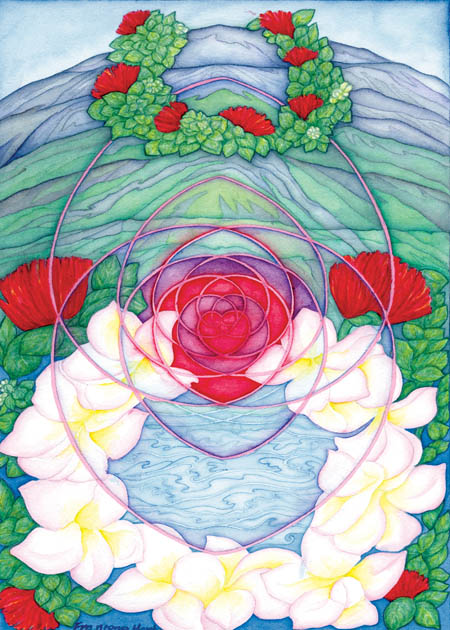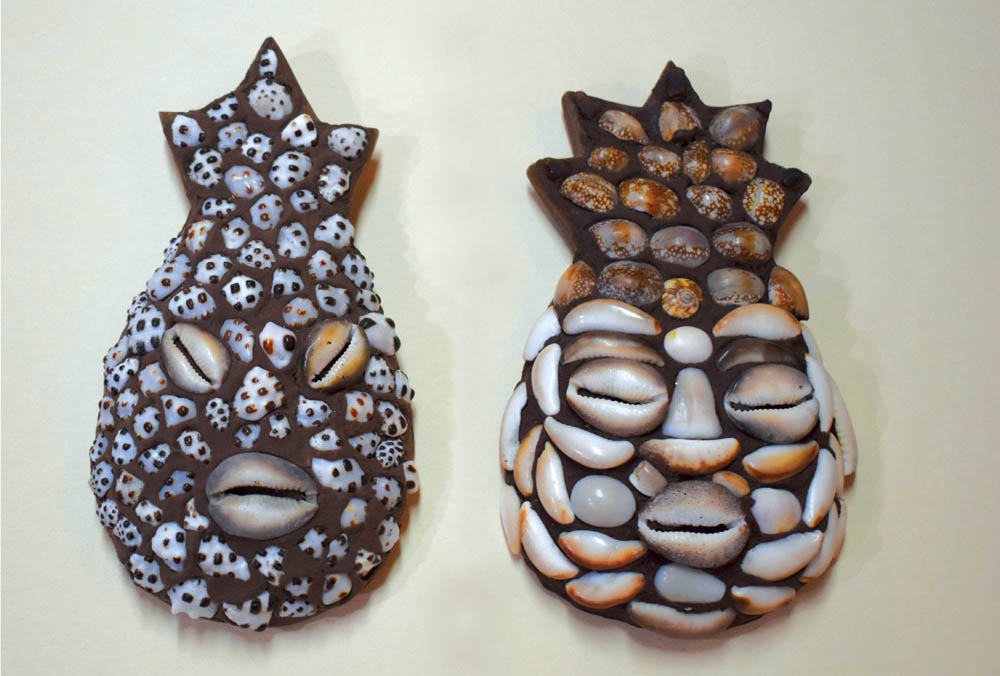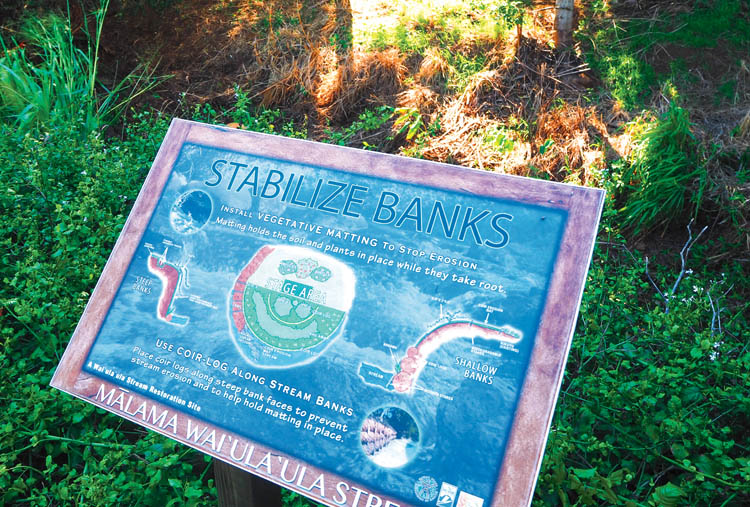
A Garden of Trees: Ulu La‘au, the Waimea Nature Park

By Brittany P. Anderson
The sky overhead is pure cobalt blue with low-lying clouds steamrolling across the landscape, their shadows dancing on the bright green grass below. Here, in the heart of downtown Waimea (Kamuela), is Ulu La‘au, the Waimea Nature Park. This 10-acre natural space is made possible by volunteers from the Waimea Outdoor Circle, a branch of the statewide nonprofit, The Outdoor Circle. The early members of The Outdoor Circle established a framework of environmental service that spread throughout the islands and continues to grow.Enhance and Preserve

In 1912 The Outdoor Circle was founded in Honolulu with the goal of keeping “Hawai‘i clean, green, and beautiful.” Since its founding, The Outdoor Circle has been the state’s leading organization for preserving the beauty of our islands. Perhaps one of the most notable achievements of the Circle was the banning of billboards throughout the state of Hawai‘i in 1926.
Started as a ladies’ group, The Outdoor Circle quickly became an environmental activist group against signs and roadside advertisements in O‘ahu. At that time, billboards were commonplace, selling soaps, cigarettes, and services. The founding ladies observed that billboards obstructed iconic Hawai‘i views, and trash collected around the structures. The women banded together and went up against local and mainland companies threatening boycotts—peppering every bill, correspondence, and letter to the editor with their anti-billboard campaign.
Imagine the side of Mauna Kea with a sign selling beer, or Waipi‘o Valley with billboards for four-wheel-drive trucks. This was their fear. These women saw iconic landscapes destroyed around Honolulu, and they knew they needed to act quickly, or our islands would never be the same. From 1913–1917, the women successfully garnered public support, and only six of the 40 advertisers continued using billboards.
In 1927, after continued public pressure on advertisers, The Outdoor Circle purchased the last local billboard printer for $4,000 and promptly shuttered its doors. That same year, state legislature adopted signage laws that have been, in essence, unchanged since. To this day, the organization still works to reduce illegal and inappropriate signage along our roadways and landscapes.
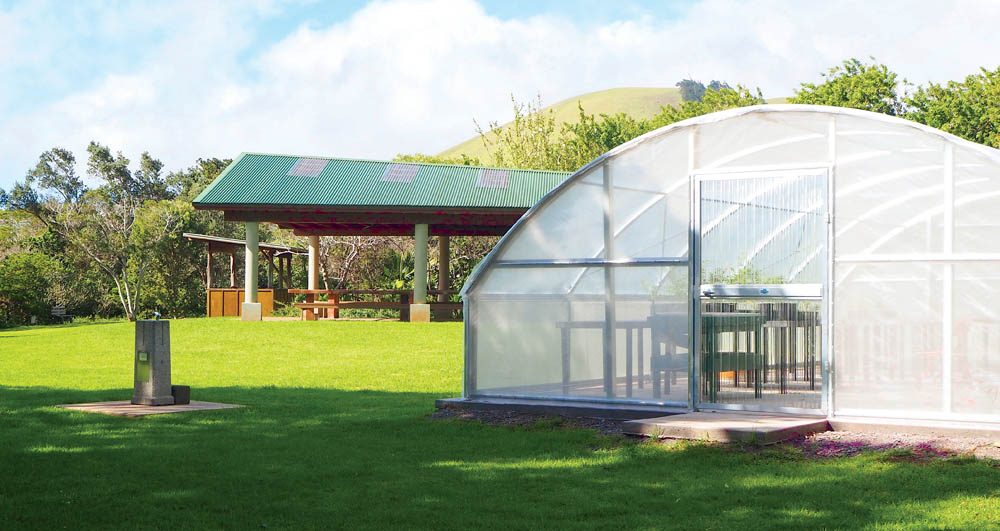
The Circle expanded its reach to include preserving green spaces, views, recycling programs, promoting tree planting, and other environmental concerns that affect the quality of life for island residents and visitors.
The Waimea branch of The Outdoor Circle was chartered in 1989, and the organization signed a 50-year lease for the 10-acre parcel of state land located behind the Canada-France-Hawaii Telescope’s office to turn the area into a public park. Situated at about 2,600 feet elevation, the land straddles wet- and dry-side Waimea. Like much of the area, Ulu La‘au is part of Waimea’s ranching past, having once been used as pasture land, and it had all but been forgotten.
Volunteers descended on the area, removing invasive species, clearing the Waikoloa stream that runs through the meandering property, and shoring up the stream bed. The 10-acre property transformed by the many hands working together and the installment of native endangered and threatened species. Long-term maintenance of the nature park by the Waimea Outdoor Circle provides an enhanced opportunity for environmental education for children and the public.
Clean, Green, and Beautiful

Two children run gleefully ahead of their parents on a path headed towards the streambed of the Waimea Nature Park. The trails running throughout Ulu La‘ua are punctuated with signs indicating names of endangered and threatened native species that call the park their home.
Schoolchildren often use Ulu La‘au as an extension of the classroom. Cheryl Langton, president of the Waimea Outdoor Circle, says, “The park is within walking distance to five area schools, so classes can come to learn about things like stream management and soil erosion,” bringing scholastic concepts to life in local application. Waimea Nature Park provides picnic tables and a beautifully constructed education pavilion, perfect for workshops and academic gatherings.
Among the endemic and indigenous varieties of plants at the park is a unique collection of different colored ‘ōhi‘a trees. Volunteer Leningrad Elarionoff sought out and air-layered nine different colored ‘ōhi‘a trees. A Ka‘ū native, he speaks with a melodic rhythm explaining the color variations. “There are as many colors of ‘ōhi‘a as there are emotions of a woman,” he says. The retired police officer had no horticultural experience. He learned to air layer and began the nature park’s collection from specimens found in his hometown. “They can be different shades of bright yellow, greenish-yellow, and red that is almost purple. There’s a white one I’ve only seen in pictures; I haven’t gotten that one yet,” Leningrad says. He has volunteered at Ulu La‘au for the past 20 years, tending to the trees, bringing a part of Ka‘ū to Waimea.
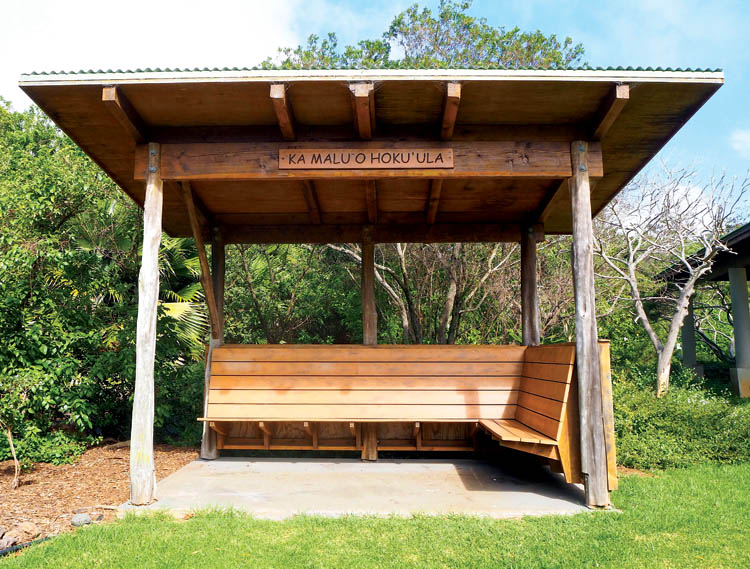
Cheryl confirms three ‘ōhi‘a have been lost to Rapid ‘Ōhi‘a Death—a fungal infection that attacks the ‘ōhi‘a tree. Rapid ‘Ōhi‘a Death (ROD) is spreading quickly, threatening forests across the state. “Weʻre working with the Big Island Invasive Species Council [BIISC] to keep the remaining trees as healthy as possible,” she adds.
The Waimea Outdoor Circle follows BIISC recommendations keeping ‘ōhi‘a bark free from cuts, maintaining adequate watering, and ensuring the trees’ immune systems are strong through routine fertilizing. The public is reminded to avoid climbing or damaging the trees to keep this unique collection safe and healthy.
A large part of what keeps Ulu La‘au beautiful is that it is a trash-free location. The Outdoor Circle was instrumental in fostering recycling programs, and as a branch of the organization, the nature park had several recycling receptacles. Routinely, volunteers collected the recycling and brought it to the county recycling center. Several years ago, Cheryl took note of the trash-free park movement that was becoming popular within the national park system. “The recycling bins had become an attractive nuisance,” Cheryl says. Placing incorrect items in bins, overflowing trashcans, and people stealing recycling became too much for the volunteer-driven organization. Park patrons were polled, and everyone agreed that moving towards a trash-free park was best.
The Waimea Nature Park is also a dog-friendly space; “Dogs are welcome, but it is not a dog park,” Cheryl notes. The Waimea Outdoor Circle asks that dogs be kept on a leash at all times for the safe enjoyment of all humans and animals alike. Dog waste bags are provided for owners to clean up after their four-legged friends, though owners need to dispose of the bags at home. “What you bring in is what you take out with you,” Cheryl remarks.
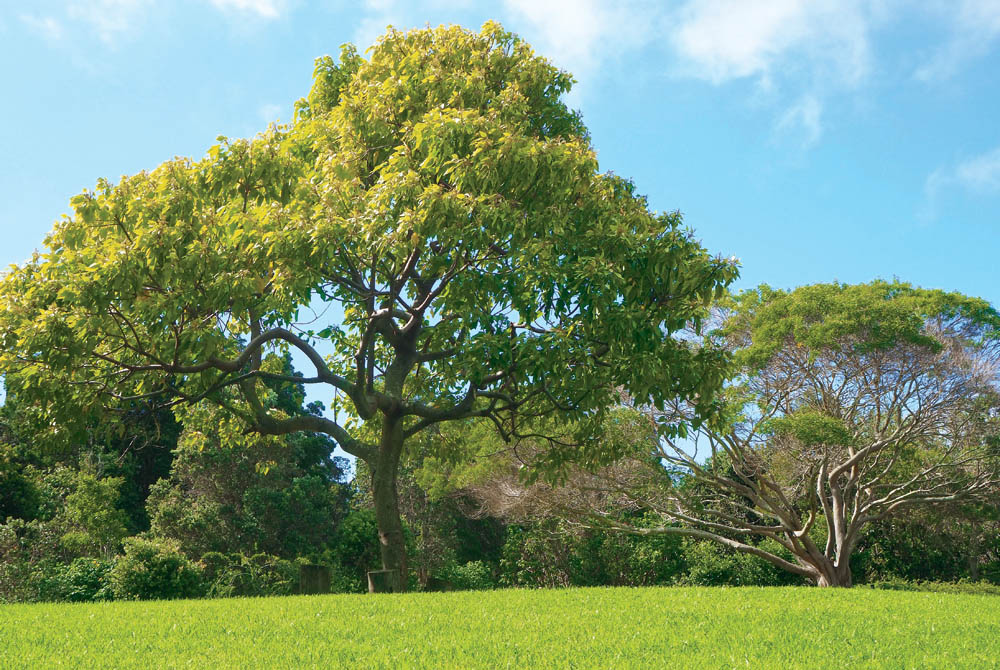
Lasting Protection
Ulu La‘au and the Waimea Outdoor Circle organization is entirely volunteer-based. Through the generous donations of private citizens and local businesses, this treasured green space is open to the public daily; however, it wouldn’t exist without strong public support.
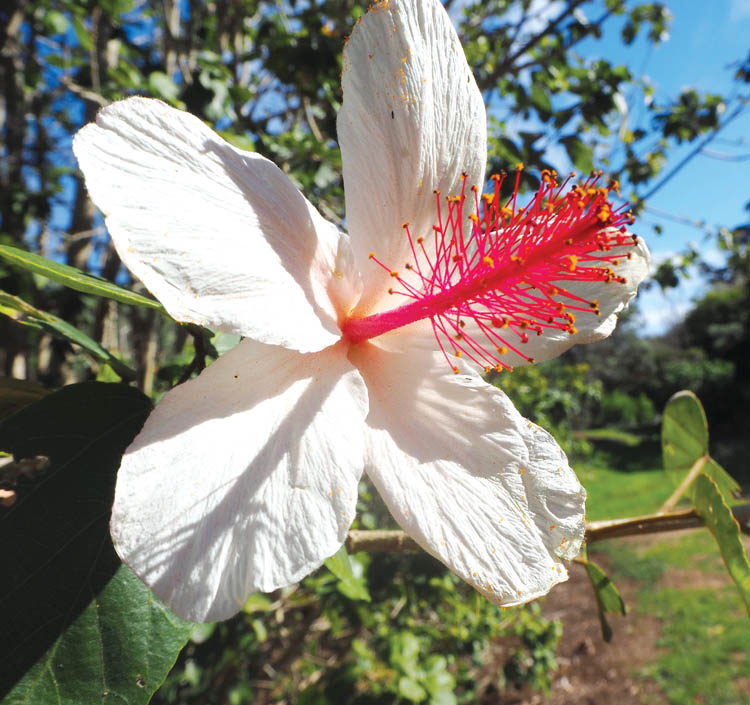
The people that enjoy the park take an active role in caring for it. “Because our volunteers have been doing this for over 15 years, the average age of our volunteers is 70,” Cheryl says, concerningly. “Weʻre always looking for new and younger volunteers,” she adds.
School groups and community service-minded clubs do occasionally come and help with trails, for which the organization offers tremendous thanks. Instilling a sense of community in the children of the growing Waimea town is vital for the continuation of the Waimea Nature Park.
Being a part of the Waimea Outdoor Circle is also a great way to learn about native plants. “I wanted to learn about native Hawaiian plants, and thought that would be something I could accomplish with the group,” Cheryl says of her inspiration to join the organization.
The Waimea Outdoor Circle has evolved over the years, addressing the changing needs of the landscape. What started as a renovation project on the Ulu La‘ua greenhouse turned into a complete rebuild. Each year on the second Saturday in April, the Waimea Outdoor Circle holds a plant sale. Due to the challenges with their greenhouse, the 2019 plant sale fundraiser was unfortunately cancelled. However, 2020 will prove to be a busy year for the group with the April 11th plant sale and park improvements.
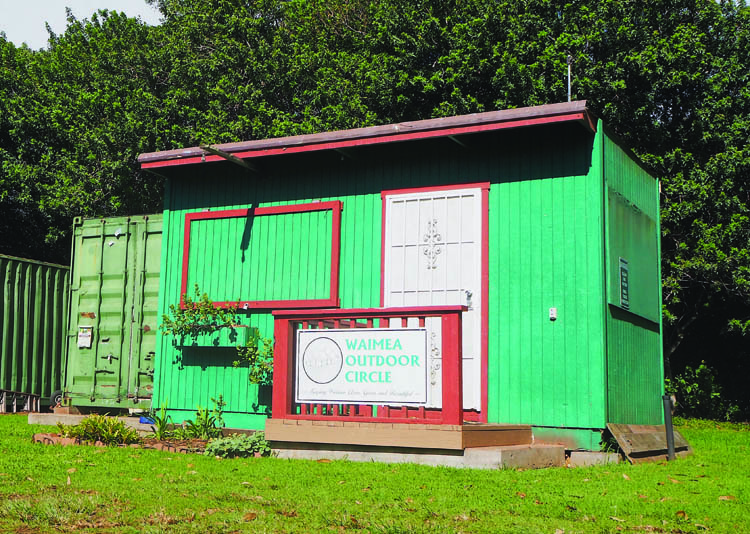
The next big project for Ulu La‘au is paving the road leading to the park, creating better drainage and increasing parking space. Funding from the state legislature will help to pay for the needed improvements. “Right now, it’s gravel and wood chips,” Cheryl chuckles, “It’s either flooded with water or dry and dusty.” These planned improvements will help to make the Waimea Nature Park easily accessible so more people can enjoy the park.
Ulu in the Hawaiian language means grove or garden, but it can also mean to grow, increase, and to protect. While lā‘au means trees or timber, it can also mean strength. Together, the volunteers of the Waimea Outdoor Circle increase in strength taking a neglected area in the center of Waimea-town, where Leningrad chased down kids smoking cigarettes, and created Ulu La‘au—a garden of trees. ❖
For more information: waimeaoutdoorcircle.org
